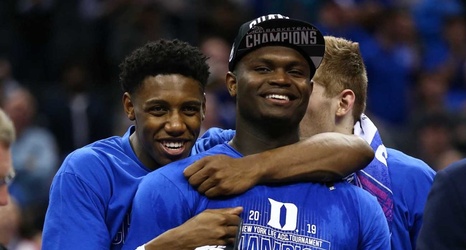

#Acc conference expansion news tv
Sometimes that can change, Central Florida didn’t even have a major sports program 30 or 40 years ago, but now it’s in one of the so-called Power 5 (should we say Power 2+?) conferences largely because of two things: Orlando is a top-20 TV market, and UCF has one of the largest student enrollments (and burgeoning alumni bases) in the nation – about 61,500. What about the idea the ACC could merge in some way with another conference? For any solution, ESPN/ABC and Fox hold chips and cards. The SEC and Big 10 have their own networks, too. The Notre Dame “relationship” began in 2012.īut the ACC grew to enough national clout with the added TV audience brought by Syracuse, BC and the Florida schools – and then Notre Dame, sort of – that it has its own ESPN-affiliated network, to which the league is contracted through 2035-36. Then came Florida State, and after a big round of conference realignment earlier in this century, Miami, Virginia Tech, Boston College, Syracuse and Louisville, and then Maryland left for the Big 10. And they did it because of – get this! – academics! The ACC established minimum SAT scores for athletes.Those seven schools – with Virginia added a few months later – comprised comprised the league until 1971, when South Carolina left and eventually wound up in the SEC. Clemson, Duke, Maryland, North Carolina, North Carolina State, South Carolina and Wake Forest split off, had a meeting in Greensboro and became the ACC. You probably don’t want to know that the ACC WAS part of the Southern Conference (the league where UNC-Greensboro now plays) until 1952. The ACC logo is seen on the field at Duke. … The best scenario is for the ACC to remain viable, hang onto its membership, hang onto its affiliation with Notre Dame, and perhaps add a member or two.” 2 television market in America, and even if those schools might or might not do blockbuster numbers in their market, they’re guaranteed to provide more Big Game football inventory for the league’s networks to present to advertisers. As columnist Eric Crawford wrote on in Louisville, “When the Big Ten added USC and UCLA, the math worked out. Louisville, Greensboro and Charlotte typically are among the top three college basketball TV markets, but they don’t add much relative to football. But this is where ACC members/states aren’t really as essential as the math might indicate. Thus, that has resonance with advertisers, which are what make TV networks tick. In a world of streaming and batch viewing, most people will sit down at a specific time and watch a specific game/event. And the more money they will receive.Īdd to that the fact that live sports are significant TV programming magnets right now. The essence really is three-pronged: There is money, which motivates everything, there are TV networks, which provide the most substantial chunks of that money and then there are the conferences, which believe in the “economies of scale” and that the more national reach and amassed TV audience they can assemble, the more powerful they are. That question simply does not get asked often enough (sarcasm). But this entire equation is predicated on football and what we had come to know as the Power 5 conferences, to which NCAA has become a 4-letter word.ĭuke’s Austin Rivers drained this buzzer-beater three-point shot against UNC. Remember, the ACC has made most of its reputation for its basketball and its broad base of success in many secondary sports. Speculation has moved all those names to a variety of places, so don’t go to sleep thinking your venerable conference is safe from ruin. So you can see why the heads of those in charge at the ACC might be a-bobble right now, and if you think that such football powers as Clemson, Florida State, Miami and Virginia Tech wouldn’t be courted, well, you might have the same naivete about basketball studs such as UNC, Duke, Virginia, Louisville and Syracuse. We’re not sure what that leaves for Stanford, Cal, Washington State and Oregon State, the last four of the “12.” Yes, two schools from Los Angeles were going to join a conference whose most western outposts were Nebraska and Iowa.Īnd then on Tuesday the Big 12 struck again, with an offer to Arizona, Arizona State, Colorado, Utah, Oregon and Washington to move over from the Pac-12. Last week UCLA and Southern Cal, those two longtime, crosstown rivals, revealed they were leaving the Pac-12, which they had helped to create, for the Big 10 (which isn’t really 10 and hasn’t been in decades).


 0 kommentar(er)
0 kommentar(er)
